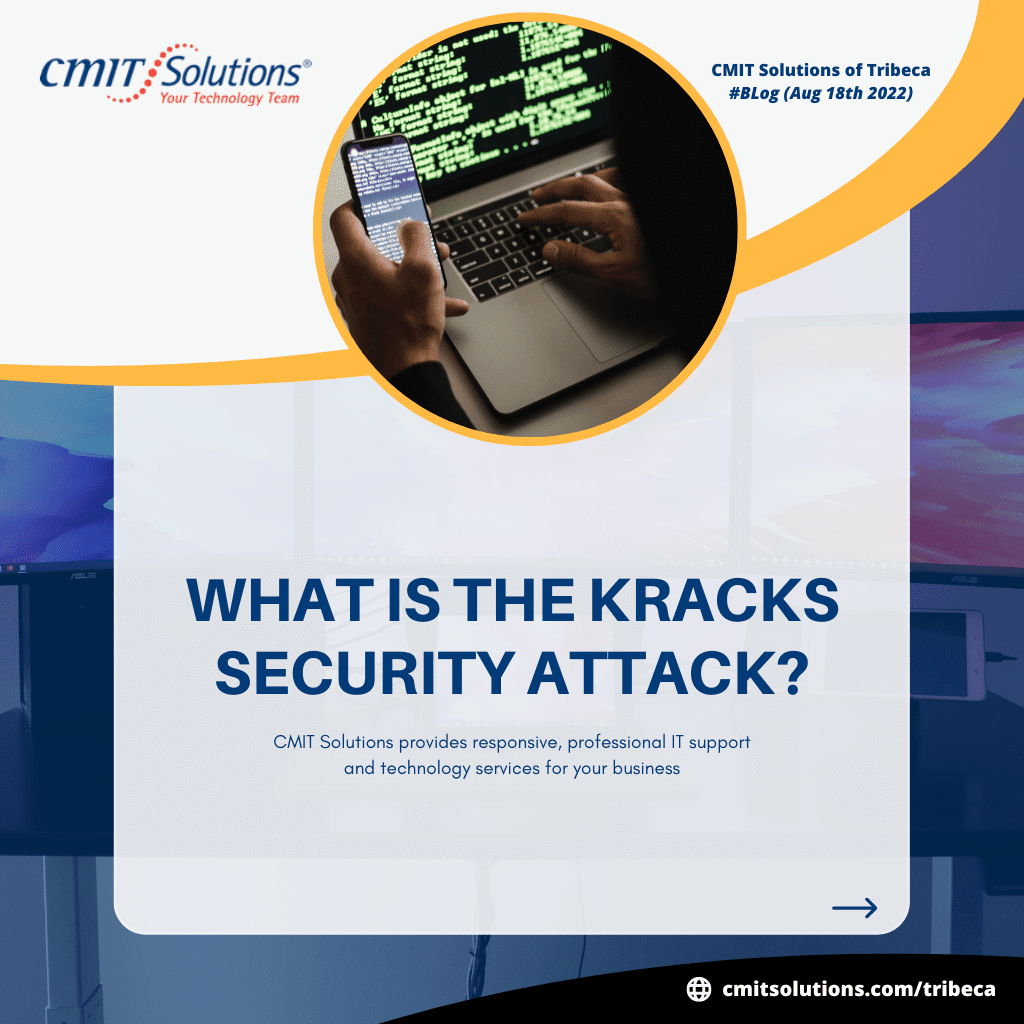If you’ve been keeping up with the news, you might have heard about the KRACK hack – a new way for hackers to access your Wi-Fi network and potentially steal your personal information. This article will explain the KRACK hack and how it could affect you.
What is the KRACKs Security Attack?
The KRACK attack is a security flaw that was discovered in 2017. It affects the WPA2 protocol, which secures most Wi-Fi networks. The attack allows an attacker to eavesdrop on traffic between a Wi-Fi device and the router. The attacker can then use this information to decrypt the traffic or inject malicious content.

What is WPA2?
The KRACK hack is a severe security flaw that affects Wi-Fi networks that use the WPA2 protocol. The spot allows attackers to eavesdrop on network traffic and even inject malicious code into websites.
The good news is that the KRACK hack can be fixed by installing a software update. Sadly, not all devices will receive the update, and some devices may never be updated.
If you are using a device affected by the KRACK hack, you must take steps to protect yourself. Use a VPN when joining public Wi-Fi networks, and be careful what websites you visit.
The KRACK hack is a severe security flaw, but there are steps you can take to protect yourself. Stay safe online!
What type of systems does it affect?
The KRACK hack affects systems that use the WPA2 protocol for security, which includes all routers and devices connected to the internet, including phones, computers, and IoT devices. While not all devices are affected, it’s a good idea to assume that yours are and take steps to protect yourself.
What can hackers do with this exploit?
The KRACK Hack allows hackers to access your Wi-Fi network and potentially steal sensitive information. They can also inject malicious code into websites, infecting your device if you visit them.
Will changing my Wi-Fi password help?
If you’re concerned about the KRACK hack, one of the first things you might be wondering is whether or not changing your Wi-Fi password will help. The answer is, unfortunately, no. The KRACK hack exploits a flaw in the WPA2 protocol, which is used to secure all modern Wi-Fi networks. Changing your password won’t do anything to fix that flaw.
However, there are some moves you can follow to protect yourself from KRACK attacks. First, ensure your devices are all up-to-date with the latest security patches. Many manufacturers have already released patches that fix the KRACK vulnerability, so installing those as soon as possible is crucial. Additionally, you can use a VPN to encrypt your traffic and protect yourself from sniffing attacks.
Ultimately, the best way to save yourself from KRACK and other Wi-Fi security threats is to stay vigilant and updated on the latest news.
What can I do to prevent the exploit from being used on my network?
One way to prevent the KRACK hack from being used on your network is to ensure that your devices are up-to-date with the latest security patches. Another way to avoid this exploit is to use a VPN when connecting to public Wi-Fi networks.
What if my device hasn’t had an update lately?
If your device hasn’t been updated recently, it may still be vulnerable to the KRACK attack. That is because the attack takes advantage of a flaw in the WPA2 protocol, which most devices use to connect to Wi-Fi networks. Even if your device is updated, taking precautions against the KRACK attack is still a good idea. For example, you can avoid using public Wi-Fi networks, or you can use a VPN to encrypt your traffic.
Who is responsible?
As we mentioned before, the KRACK Hack is a severe problem that affects anyone who uses Wi-Fi. But who is responsible for this problem?
There are two parties responsible for the KRACK Hack. The first is the Wi-Fi Alliance, the organization responsible for setting the standards for Wi-Fi devices. The second party is the company that manufactures your Wi-Fi router or access point.
The Wi-Fi Alliance has known about the KRACK Hack since 2016 but didn’t announce it to the public until 2017. That means they had enough time to fix the problem but didn’t. As a result, millions of people are at risk because of their inaction.
The other party responsible for the KRACK Hack is the company that manufactured your Wi-Fi router or access point. If they use an outdated security protocol (like WPA2), your device is probably vulnerable to attack.
Fortunately, there are some moves you can take to protect yourself from the KRACK Hack. We’ll talk more about that in our next section.
Have criminals used the exploit?
So far, there is no verification that the KRACK exploit is used by criminals in the wild. However, given the widespread nature of the vulnerability, it’s only a matter of time before someone tries to use it for malicious purposes. If you have Wi-Fi enabled on your devices, it’s essential to be aware of the KRACK exploit and take steps to protect yourself.
Conclusion
The KRACK hack is a serious vulnerability that affects Wi-Fi networks. While it is possible to protect yourself from this attack, it is essential to be aware of the risks and take steps to ensure your safety. If you are using Wi-Fi, update your devices and router firmware and use a VPN if possible. These precautions can help you protect yourself from the KRACK hack and other threats.




